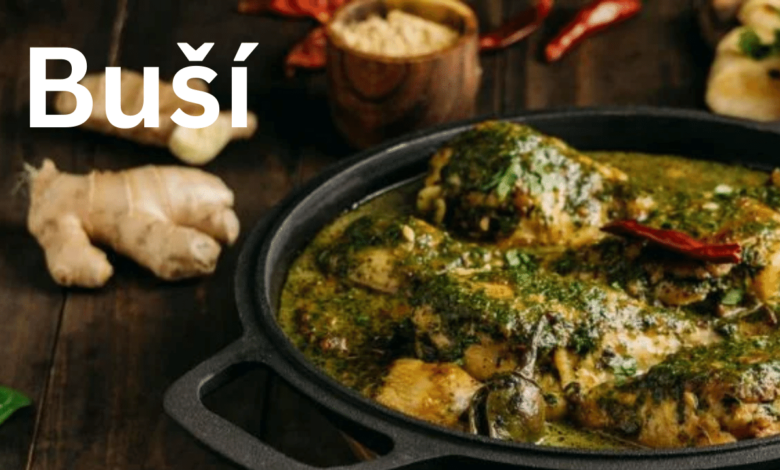
In the rich mosaic of global cultures, certain traditions and terms stand out for their multifaceted significance, weaving together strands of history, gastronomy, and communal life. Buší is one such term that embodies a spectrum of cultural expressions, from rhythmic communal experiences to traditional Czech dances, and even extending into the realm of gastronomy. This article delves into the diverse world of buší, exploring its various dimensions and the unique place it holds in the cultural and social fabric of communities around the world.
The Communal Rhythm of Buší
At its core, buší represents a communal experience that transcends the boundaries of age, gender, or social status. This aspect of buší is rooted in the creation and sharing of rhythmic patterns and beats, which serve not only as a form of entertainment but also as a means of communication. Through these rhythms, communities narrate tales, commemorate historical events, or celebrate joyous occasions, creating a vibrant tapestry of sound that binds people together. The universal language of rhythm and beat found in buší highlights the power of music and sound to connect individuals, foster social cohesion, and preserve cultural memories.
Buší in Czech Tradition: A Dance of Heritage
In the Czech Republic, buší takes on a special significance as a traditional folk dance. These dances are an integral part of the Czech cultural heritage, passed down through generations and serving as a vibrant expression of national identity. Czech folk dances, including buší, are characterized by their intricate steps, lively music, and the communal joy they evoke. Through these dances, the Czech people celebrate their history, express communal solidarity, and keep alive a rich tradition that is a cornerstone of their cultural identity.
Gastronomic Delights of Buší
Beyond its cultural and communal dimensions, “buší” also refers to a cherished dish in various culinary traditions. This aspect of “buší” underscores the role of food in cultural expression and community life. Festivals dedicated to “buší” and songs inspired by its deliciousness highlight the gastronomic importance of this dish. Whether it’s a traditional recipe passed down through generations or a modern reinterpretation of the classic, “buší” in the context of food celebrates the art of cooking and the joy of sharing meals, reinforcing the communal spirit that “buší” embodies.
Cultural Variations and Interpretations
The term buší is not confined to a single meaning but varies across cultures, each offering its interpretation and significance. From traditional dances to culinary delights, buší reflects the diversity of human culture and how traditions can evolve and adapt over time. This variation underscores the richness of cultural expressions and the infinite ways in which communities around the world celebrate their heritage, creativity, and collective life.
Beyond the Known: Buší’s Broader Implications
Buší also resonates beyond its immediate cultural and gastronomic contexts, touching upon areas such as nature, recreation, and even ancient strategy games. This broader implication of “buší” showcases the term’s versatility and its capacity to transcend geographical and cultural boundaries, highlighting the interconnectedness of human experiences and the shared values that unite different communities.
The Role of Buší in Community Bonding
Community bonding is at the heart of buší. This term encapsulates the spirit of togetherness that is fostered through shared experiences, whether they be in dance, music, or communal feasts. The rhythms and patterns of buší are not just sounds or movements; they are the threads that weave the fabric of community life, connecting individuals across generations. This aspect of “buší” underscores the importance of cultural practices in fostering a sense of belonging and unity within communities, reminding us of our shared humanity and the universal desire for connection.
Preserving Cultural Heritage Through Buší
“Buší” also plays a crucial role in the preservation of cultural heritage. Each rendition of a “buší” dance or preparation of a “buší” dish is a living testament to the rich history and traditions of a community. By engaging in these practices, individuals not only celebrate their cultural identity but also ensure that their heritage is passed down to future generations. In this way, “buší” serves as a bridge between the past and the future, allowing for the continuous evolution of cultural traditions while maintaining a link to historical roots.
Buší as a Medium for Gastronomic Expression
The gastronomic dimension of “buší” highlights the creative and expressive potential of food within cultural practices. Food is more than just sustenance; it is a form of communication, a way to express identity, and a means of artistic expression. The preparation and sharing of “buší” dishes are acts imbued with cultural significance, embodying the values, history, and culinary creativity of a community. Through these gastronomic practices, “buší” contributes to the rich tapestry of world cuisines, offering insights into the diverse ways in which cultures celebrate, remember, and innovate through food.
Buší in Modern Contexts
In modern contexts, “buší” continues to evolve, reflecting the dynamic nature of cultural traditions in a globalized world. As communities migrate, mix, and interact, “buší” adapts, taking on new forms and meanings while retaining its essence as a symbol of community and cultural identity. This adaptability of “buší” demonstrates the resilience of cultural practices and their capacity to thrive and evolve in changing environments. It also highlights the ongoing dialogue between tradition and innovation, where ancient practices meet contemporary expressions, enriching the cultural landscape.
Conclusion: The Enduring Legacy of Buší
The exploration of “buší” reveals a world rich in cultural diversity, communal bonds, and culinary delights. As a multifaceted term, “buší” encompasses the vibrancy of human culture, the depth of our traditions, and the enduring strength of our communities. Through its various manifestations, “buší” offers a window into the soul of societies, inviting us to appreciate the beauty of our shared and diverse human experiences. As we continue to explore and celebrate “buší” in all its forms, we not only honour the past but also sow the seeds for future generations to cherish and continue these rich traditions.
Frequently Asked Questions (FAQs)
1. What does buší mean in a cultural context?
In a cultural context, buší can refer to a communal rhythmic experience, a traditional Czech folk dance, or even a cherished gastronomic tradition, depending on the cultural background and interpretation.
2. How is buší celebrated in the Czech Republic?
In the Czech Republic, “buší” is celebrated as a traditional folk dance, an important part of the country’s cultural heritage. These dances are a vibrant expression of Czech identity, history, and community.
3. Can buší refer to a type of food?
Yes, “buší” can also refer to a dish celebrated in various culinary traditions. It highlights the role of food in cultural expression and the communal joy of sharing meals.
4. Does the meaning of buší vary across cultures?
Yes, the meaning of “buší” varies across cultures, reflecting different traditions, practices, and interpretations. This variation underscores the diversity and richness of cultural expressions around the world.
5. How does buší extend beyond traditional dances and food?
Beyond dances and food, “buší” extends to encompass aspects of nature, recreation, and cultural exploration, demonstrating the term’s versatility and its capacity to resonate across different areas of human experience.




